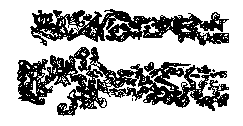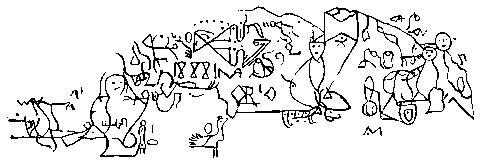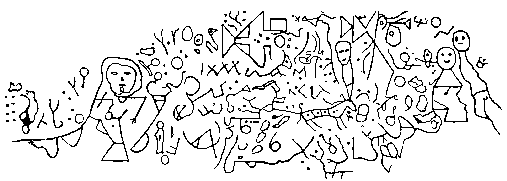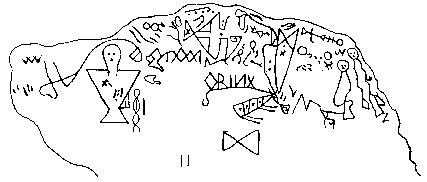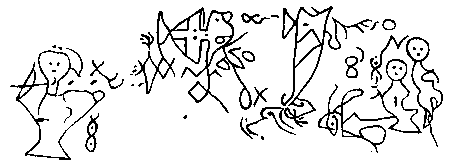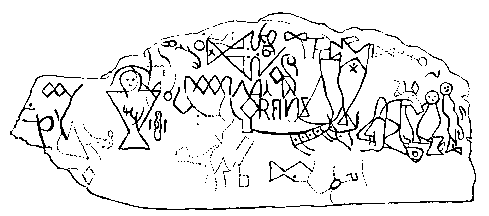

The most controversial inscribed rock in New England is Dighton Rock at Berkeley, Massachusetts, on the Taunton River. As early as 1677, scholars such as Cotton Mather. Dean Barkeley, and Ezra Stiles have tried to decipher the messages chiseled into its ten foot by four foot sandstone face. Stiles was convinced that the rock was covered with ancient Phoenician petroglyphs. Mather sent drawings of the markings to the Royal Society of London to see what they thought, but the English scientists were non-committal. In 1837, Danish scholar Carl Rafn read Roman numerals and the name "Thorfinn Karlsefni" in the stone. Thorfinn supposedly sailed to America from Greenland in the year 1010. In this century, Brown University professor Edmund Burke Delabarre deciphered part of the inscription on the rock to read: "Miguel Cortereal by will of God, here Chief of the Indians," along with the date 1511 and a Portuguese coat-of-arms. Miguel Cortereal, a Portuguese navigator, did disappear in 1501 with his crew, sailing the Atlantic in search of his explorer brother Gaspar Cortereal, who had also disappeared with his three ship and crews the year before. Their father, Joao Vas Cortereal, traveled to "the land of the cod," thought to be Newfoundland in 1472, twenty years before Columbus' voyage.
"Dighton Rock is like the rocks you see along the highways, filled with graffiti," says Jim Whitall. "It's where everyone wanted to leave a message, and it's the first stone in America that anyone paid any attention to. It was a bulletin-board for ancients, Native Americans, and colonials alike." The rock with the mysterious hieroglyphs was moved to dry land a few years ago by the Commonwealth of Massachusetts and a building was built around it to preserve the inscriptions. Winter ice and constant submergence at high tide under the Taunton River, began obliterating some of the older markings. Also, in case one of the great scholars who deciphered the stone over the past 300 plus years is right, it's best to preserve what may be a most important piece of history. Even if the hodgepodge of scratches and scribblings can't ever be deciphered, Dighton Rock is a unique rock of ages. Sam Morison said, "if the history of the Dighton Rock is nothing else, it is a remarkable demonstration of human credulity. Right on, Sam!"
In Massachusetts, Dighton Rock has been moved from its original position, where it was subject to daily inundation by tides, to higher ground.
...A number of sites ...feature meadering lines, round-headed anthropomorphs, turkey and animal tracks, and footprints. Other examples occur in Rhode Island and at the celebrated Dighton Rock in Massachusetts. This site, identical in style and technique to examples in Pennsylvania, has been discussed by armchair antiquarians for centuries (even Cotton Mather made a rather bad drawing of it in 1712), and all sorts of explanations have been offered. It has been ascribed to the Scythians, Phoenicians, and the Norsemen. Lately a new theory has appeared: the rock, moved from its original site, has been placed in a small park with an adjoining display proving that the round-headed anthropomorphs are actually part of the Portuguese coat of arms, and the whole inscription is a message from Miguel Cortereal, a Portuguese explorer. The Algonquian Indians who incised the lines at least 350 years ago would have been amused.
DIGHTON ROCK STATE PARK (DIE-ton)
In the Taunton River at this spot stands a rock on which Indians carved petroglyphs at some unknown time in the past. These markings were known in the 17th century and prompted Cotton Mather to speculate about their origin.
Non-Indian inscriptions have also been chipped in the rock. According to the book Dighton Rock by E. B. Delabarre of Brown University, one of these inscriptions indicates that a Portuguese explorer, Miguel Cortereal, visited the spot in A.D. 1511. Not all scholars agree with Dr. Delabarre's interpretation.
Special Interest. At one time certain markings on the rock were supposed to have been made by Vikings. This prompted the 19th-century violinist Ole Bull to buy it for the Royal Society of Copenhagen. When scholars disproved the idea of Norse origin, the society gave the rock to the Old Colony Historical Society of Taunton, which then presented it to the Commonwealth of Massachusetts.
... a forty-ton boulder, ......It has been drawn, photographed, and even videotaped endlessly since 1680, when John Danforth first drew a portion of the inscriptions. The carvings on its relatively smooth westward-facing surface now more closely resemble the tangled mess of signs on a graffiti-covered side of a New York subway train than a clear message from the past.
And another bit of info I picked up somewhere - supposedly Dighton Rock is Norse runes, translated by Olaf Strandwhold as "thygsthi was buried on the shore year 1049 A.D."

